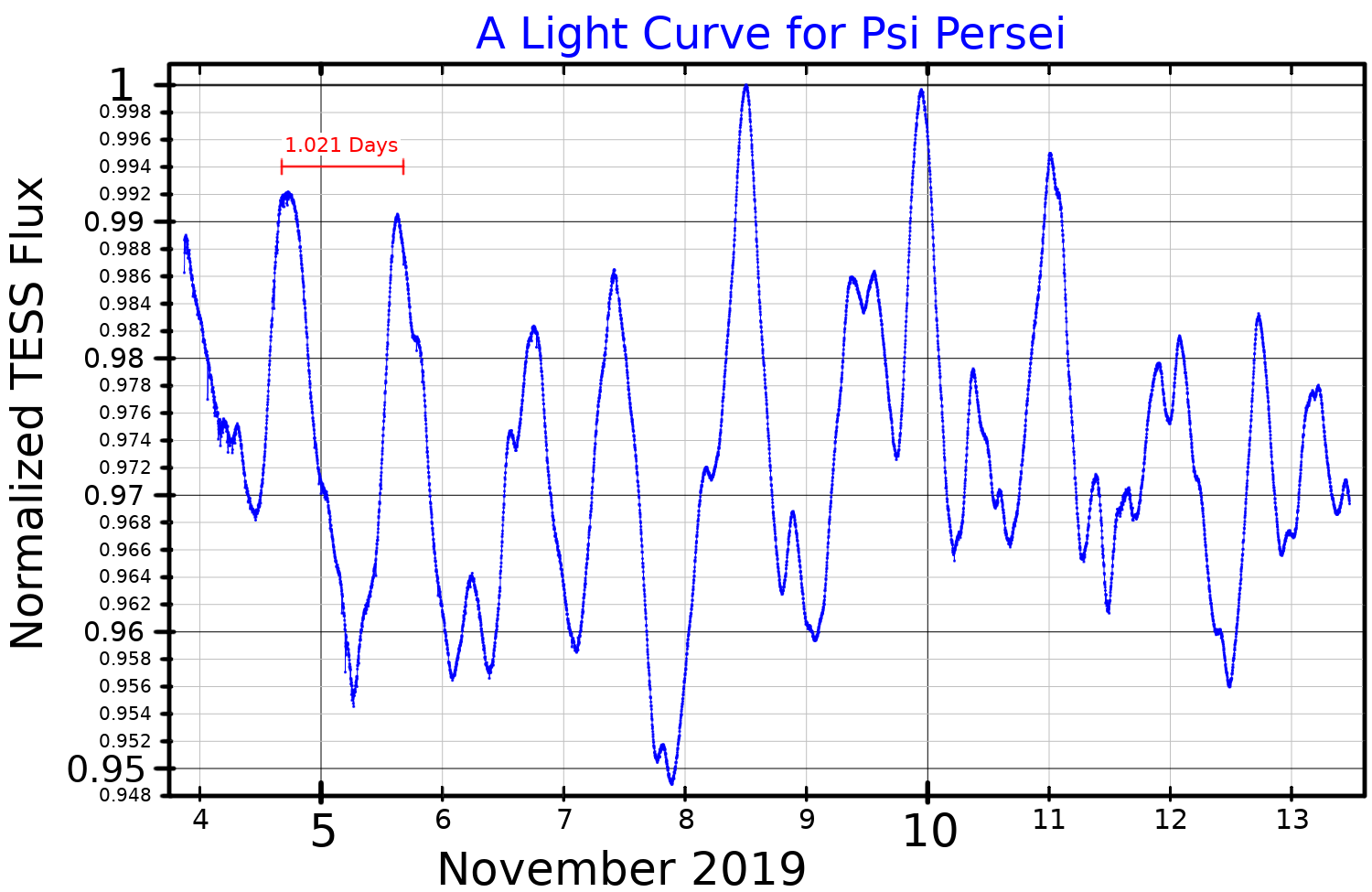Žł Persei on:
[Wikipedia]
[Google]
[Amazon]
Psi Persei (Psi Per, Žł Persei, Žł Per) is a single Be star in the northern
 This star has a
This star has a
constellation
A constellation is an area on the celestial sphere in which a group of visible stars forms Asterism (astronomy), a perceived pattern or outline, typically representing an animal, mythological subject, or inanimate object.
The first constellati ...
of Perseus
In Greek mythology, Perseus (, ; Greek language, Greek: ╬Ā╬ĄŽüŽā╬ĄŽŹŽé, Romanization of Greek, translit. Perse├║s) is the legendary founder of the Perseid dynasty. He was, alongside Cadmus and Bellerophon, the greatest Greek hero and slayer of ...
. It has an apparent visual magnitude of about 4.2, so it is visible to the naked eye at night under suitably dark skies. Based on parallax
Parallax is a displacement or difference in the apparent position of an object viewed along two different sightline, lines of sight and is measured by the angle or half-angle of inclination between those two lines. Due to perspective (graphica ...
measurements, it is located at a distance of roughly from the Earth
Earth is the third planet from the Sun and the only astronomical object known to Planetary habitability, harbor life. This is enabled by Earth being an ocean world, the only one in the Solar System sustaining liquid surface water. Almost all ...
.
Properties
 This star has a
This star has a stellar classification
In astronomy, stellar classification is the classification of stars based on their stellar spectrum, spectral characteristics. Electromagnetic radiation from the star is analyzed by splitting it with a Prism (optics), prism or diffraction gratin ...
of B5Ve, which indicates it is a B-type main sequence star that is generating energy at its core through the nuclear fusion
Nuclear fusion is a nuclear reaction, reaction in which two or more atomic nuclei combine to form a larger nuclei, nuclei/neutrons, neutron by-products. The difference in mass between the reactants and products is manifested as either the rele ...
of hydrogen. It is a shell star with a circumstellar disc of gas surrounding the equator and extending out to about 11 times the radius of the star. As a result of this disc, the spectrum of this star shows emission lines (as indicated by the 'e' in the stellar class) and its magnitude varies over a period 1.021 days. The General Catalog of Variable Stars classifies Psi Persei as a gamma Cassiopeiae variable star, whose visual band brightness varies from magnitude 4.17 to 4.28.
Psi Persei is rotating rapidly with a projected rotational velocity
Stellar rotation is the angular motion of a star about its axis. The rate of rotation can be measured from the spectrum of the star, or by timing the movements of active features on the surface.
The rotation of a star produces an equatorial bu ...
(''v'' sin ''i'') along the equator of 390 km/s or more. The axis of rotation is inclined about to the line of sight from the Earth, so this velocity is close to the actual azimuthal velocity along the star's equator. It is expelling mass at the rate of about times the mass of the Sun per year, or the equivalent of the Sun's mass every 20 million years. The rapid rotation causes Psi Persei to be an oblate shape, with the equatorial radius being and the polar radius to be .
This star may be a member of the Alpha Persei Cluster
The Alpha Persei Cluster, also known as Melotte 20 or Collinder 39, is an open cluster of stars in the northern constellation of Perseus (constellation), Perseus. To the naked eye, the cluster consists of several blue-hued spectral type B stars. ...
, although its proper motion
Proper motion is the astrometric measure of changes in the apparent places of stars or other celestial objects as they move relative to the center of mass of the Solar System. It is measured relative to the distant stars or a stable referenc ...
is high compared to other members. Membership probabilities of 26% and 50% have been published from GALAH
The galah (; ''Eolophus roseicapilla''), less commonly known as the pink and grey cockatoo or rose-breasted cockatoo, is an Australian species of cockatoo and the only member of the genus ''Eolophus''. The galah is adapted to a wide variety of m ...
plus APOGEE data and from Gaia Data Release 2 data respectively.
Name and etymology
This star, together with ╬┤ Per, Žā Per, ╬▒ Per, ╬│ Per and ╬Ę Per, has been called ''the Segment of Perseus''. In Chinese, (), meaning '' Celestial Boat'', refers to an asterism consisting of Žł Persei, ╬Ę Persei, ╬▒ Persei, ╬│ Persei, ╬┤ Persei, 48 Persei, ╬╝ Persei and HD 27084. Consequently, the Chinese name for Žł Persei itself is (, .)References
{{DEFAULTSORT:Psi Persei Persei, Psi Persei, 37 Perseus (constellation) Be stars Alpha Persei Cluster 016826 022192 Durchmusterung objects 1087